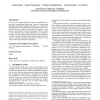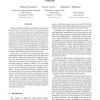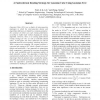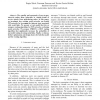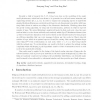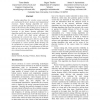ADHOCNOW
2003
Springer
15 years 8 days ago
2003
Springer
We introduce Space-Time Routing (STR), a new approach to routing in mobile ad hoc networks. In STR, the age of routing state is considered jointly with the distance to the destinat...
MOBICOM
2003
ACM
15 years 8 days ago
2003
ACM
For many years, scalable routing for wireless communication systems was a compelling but elusive goal. Recently, several routing algorithms that exploit geographic information (e....
IPPS
2003
IEEE
15 years 9 days ago
2003
IEEE
High performance, freedom from deadlocks, and freedom from livelocks are desirable properties of interconnection networks. Unfortunately, these can be conflicting goals because n...
ICPPW
2003
IEEE
15 years 9 days ago
2003
IEEE
Gaussian Cubes (GCs) are a family of interconnection topologies in which the interconnection density and algorithmic efficiency are linked by a common parameter, the variation of ...
IPTPS
2004
Springer
15 years 12 days ago
2004
Springer
— The equality and anonymity of peer-to-peer networks makes them vulnerable to routing denial of service attacks from misbehaving nodes. In this paper, we investigate how existin...
EDBTW
2004
Springer
15 years 13 days ago
2004
Springer
In this paper, we investigate how existing social networks can benefit P2P data networks by leveraging the inherent trust associated with social links. We present a trust model t...
PDCAT
2005
Springer
15 years 15 days ago
2005
Springer
Recently a bulk of research [14, 5, 15, 9] has been done on the modelling of the smallworld phenomenon, which has been shown to be pervasive in social and nature networks, and eng...
VLSID
2005
IEEE
15 years 18 days ago
2005
IEEE
The primary advantage of using 3D-FPGA over 2D-FPGA is that the vertical stacking of active layers reduce the Manhattan distance between the components in 3D-FPGA than when placed...
ITCC
2005
IEEE
15 years 18 days ago
2005
IEEE
Recently, efficient custom-hardware designs were proposed for the linear algebra step of the Number Field Sieve integer factoring algorithm. These designs make use of a heuristic ...
ITCC
2005
IEEE
15 years 18 days ago
2005
IEEE
has to be relayed to nodes interested in those events. Moreover, nodes may also generate queries to find events they are interested in. Thus there is a need to route the informatio...

